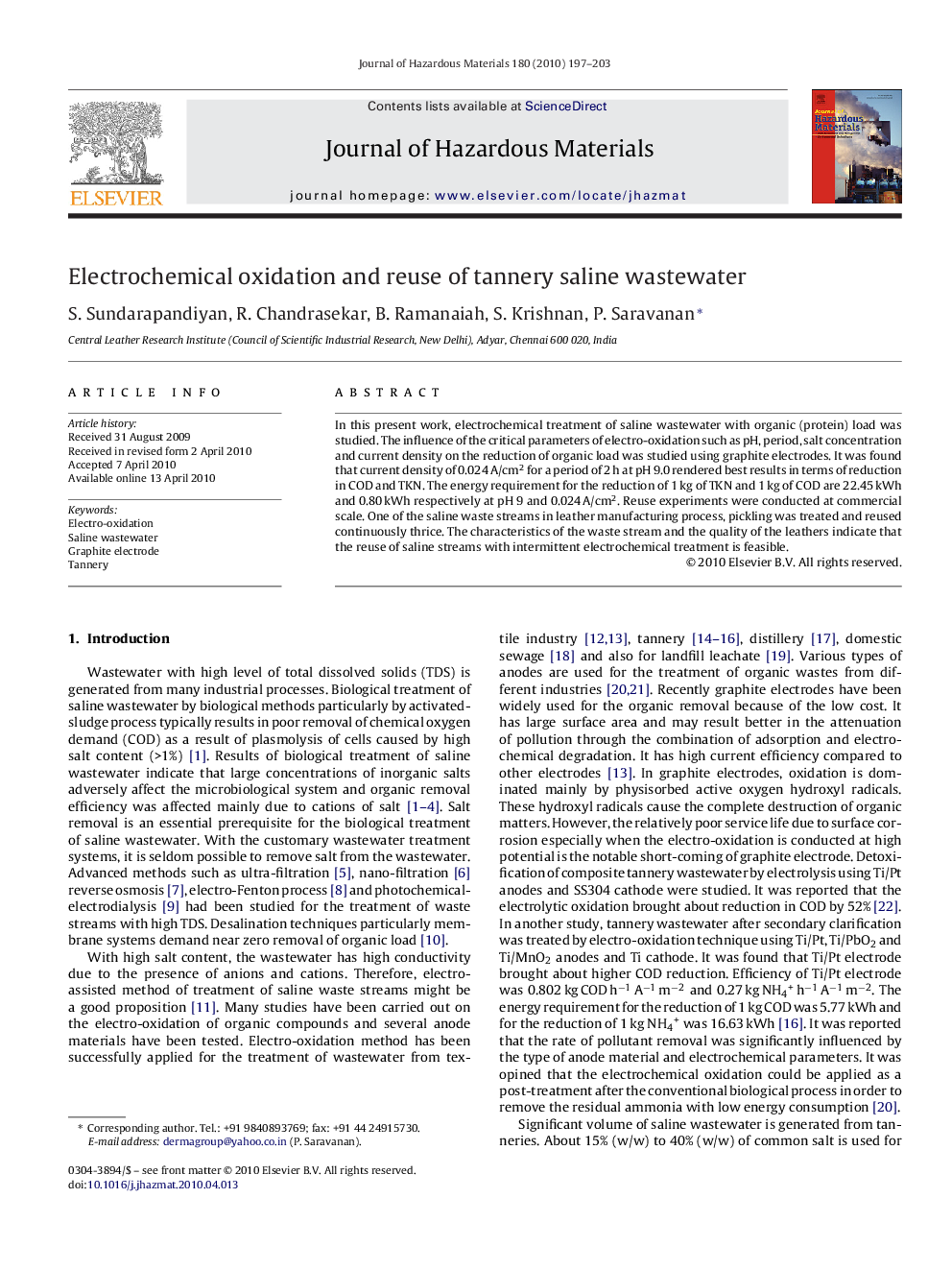| Article ID | Journal | Published Year | Pages | File Type |
|---|---|---|---|---|
| 580049 | Journal of Hazardous Materials | 2010 | 7 Pages |
Abstract
In this present work, electrochemical treatment of saline wastewater with organic (protein) load was studied. The influence of the critical parameters of electro-oxidation such as pH, period, salt concentration and current density on the reduction of organic load was studied using graphite electrodes. It was found that current density of 0.024Â A/cm2 for a period of 2Â h at pH 9.0 rendered best results in terms of reduction in COD and TKN. The energy requirement for the reduction of 1Â kg of TKN and 1Â kg of COD are 22.45Â kWh and 0.80Â kWh respectively at pH 9 and 0.024Â A/cm2. Reuse experiments were conducted at commercial scale. One of the saline waste streams in leather manufacturing process, pickling was treated and reused continuously thrice. The characteristics of the waste stream and the quality of the leathers indicate that the reuse of saline streams with intermittent electrochemical treatment is feasible.
Related Topics
Physical Sciences and Engineering
Chemical Engineering
Chemical Health and Safety
Authors
S. Sundarapandiyan, R. Chandrasekar, B. Ramanaiah, S. Krishnan, P. Saravanan,
